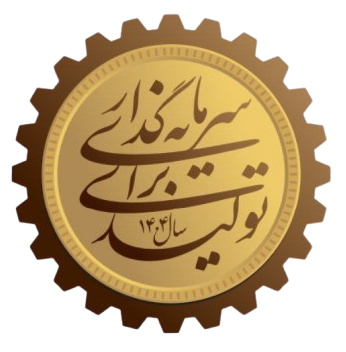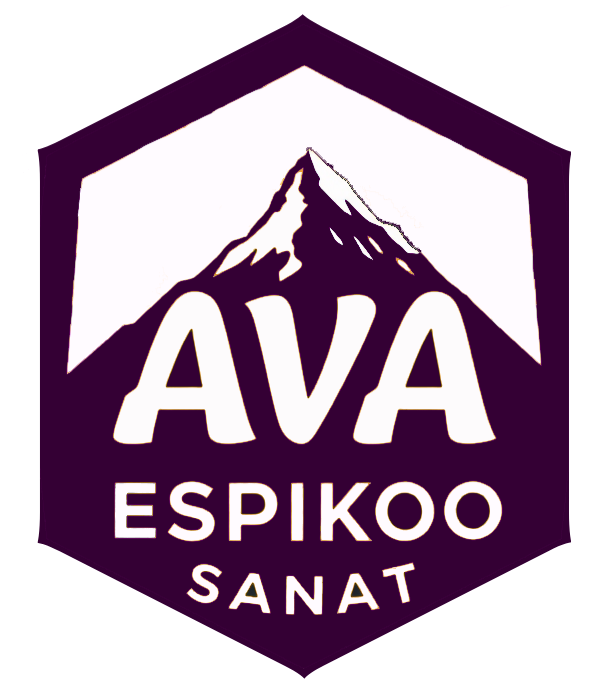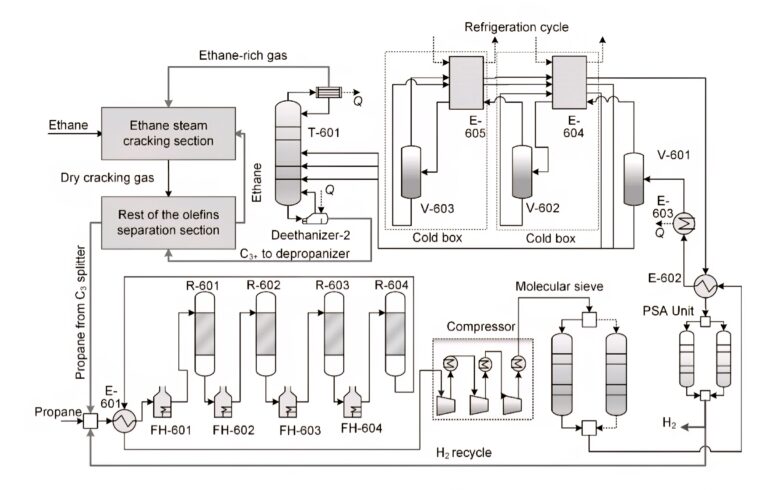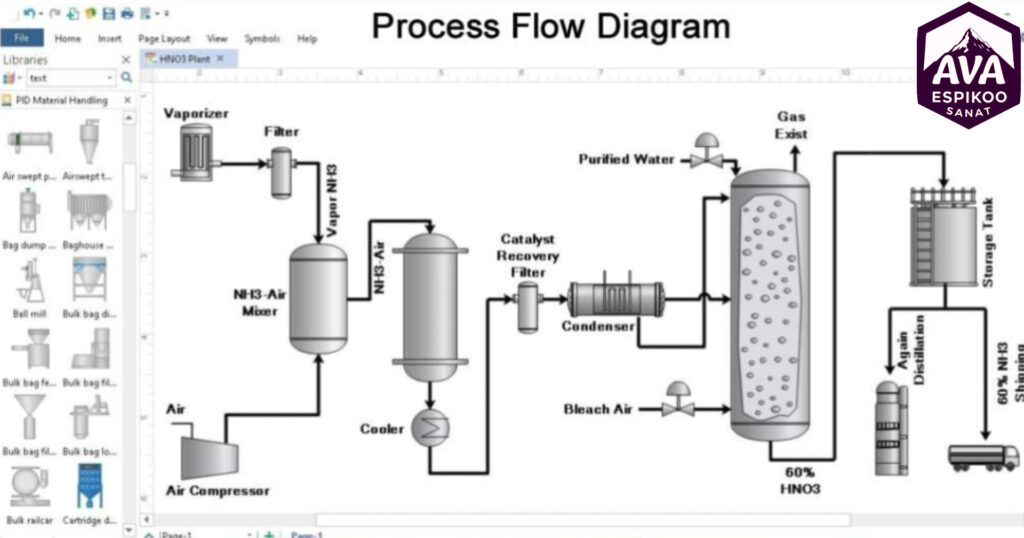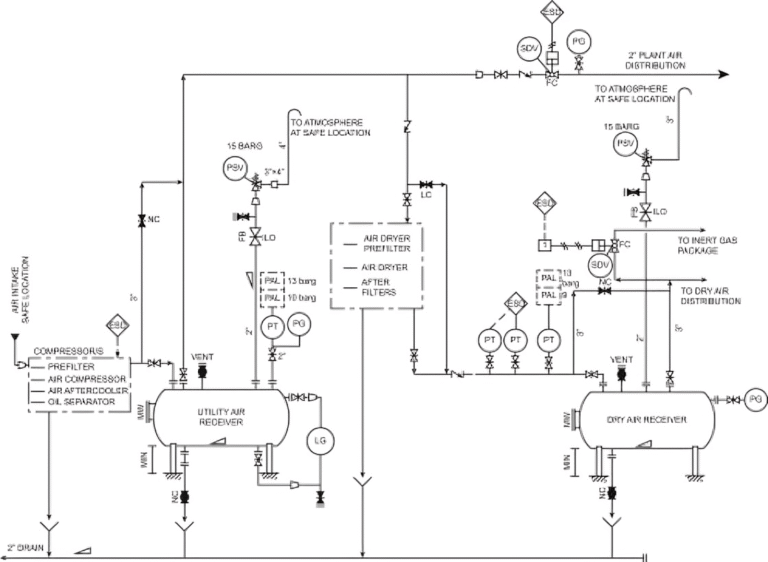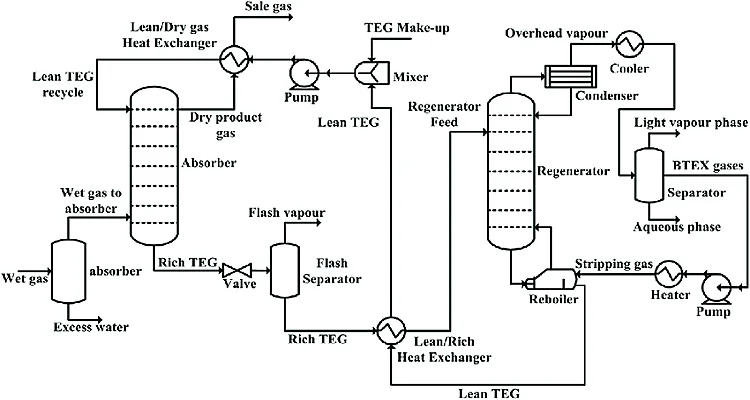| 1 | PFD (Process Flow Diagram) | shows the flow path of materials and main equipment in the process |
| 2 | UFD (Utility Flow Diagram) | shows utility flows such as steam, air, water, fuel |
| 3 | P&ID (Piping & Instrumentation) | Piping and instrumentation diagram with valve, transmitter and line details |
| 4 | PSID (Process Safety Interlock) | Safety diagram and interlock logic for emergency stop or safe control |
| 5 | Control Philosophy | Explanation of how to control processes, operating modes, control systems (PLC, DCS, etc.) |
| 6 | Instrumentation Philosophy: | Approach to instrument design and how to install, maintain, calibrate |
| 7 | Layout (Plot Plan) | A map of the layout of equipment, routes, buildings, and site infrastructure. |
| 8 | Cause & Effect Matrix | A table of relationships between causes (signals) and logical system responses |
| 9 | Equipment List | List of all process equipment with general specifications |
| 10 | Line List | List of piping lines with size, material, pressure and service |
| 11 | Data Sheets | Technical data sheets and design information for equipment and precision instruments |
| 12 | Material Selection Report: | Report on selecting suitable materials for corrosion, pressure, temperature and environment |
| 13 | Hazardous Area Classification | Categorizing hazardous areas for selecting explosion-proof equipment |
| 14 | Utility Consumption Summary | Utility Consumption Summary for Backup System Design |
English

